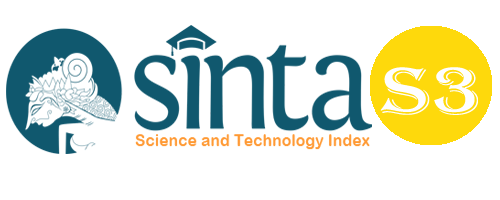Strengths and Weaknesses of Cognitive Theory
Abstract
This paper focuses on strengths and weaknesses of the Cognitive Theory. Many theories have been proposed over the years to explain the developmental changes that people undergo over the course of their lives. These theories differ in the conceptions of human nature they adopt and in what they regard to be the basic causes and mechanisms of human motivation and behavior. Piaget's theory of cognitive development explains how a child constructs a mental model of the world. He disagreed with the idea that intelligence was a fixed trait, and regarded cognitive development as a process which occurs due to biological maturation and interaction with the environment. Cognitive learning theory is best used to guide learning when trying to build usefulness Knowledge structures, and clinical reasoning teaching. The theory suggests that Clinical exercise is crucial to the organization of Memory Knowledge and Recall Facilitation. This means teachers will be expected to be aware of prior clinical experiences of the learner before assessing the learner’s experience Powerful performance.
Keywords
Full Text:
PDFReferences
Alahmad, Mana. The Role of Form–Focused Instruction on Foreign Language Learners. Budapest International Research and Critics in Linguistics and Education (BirLE) Journal Volume 2, No 4, November 2019, Page: 44-53 e-ISSN: 2655-1470 (Online), p-ISSN: 2655-2647 (Print) www.bircu-journal.com/index.php/birle
Backscheider, A. G., Shatz, M., & Gelman, S. a. (1993). Preschoolers’ Ability to Distinguish Living Kinds as a Function of Regrowth. Child Development, 64, 1242–1257. https://doi.org/10.2307/1131337
Baillargeon, R. (1987). Object permanence in 3 1/2- and 4 1/2-month-old infants. Developmental Psychology,23, 655–664. https://doi.org/10.1037//0012-1649.23.5.655
Bauer, P. J., Larkina, M., & Deocampo, J. (2011). Early Memory Development. In U. Goswami (Ed.), The Wiley-Blackwell Handbook of Childhood Cognitive Development, Second edition (2nd ed.). New York:Wiley-Blackwell.
Beilin, H. (1992). Piaget’s enduring contribution to developmental psychology. Developmental Psychology,28(2), 191–204. https://doi.org/10.1037/0012-1649.28.2.191
Chomsky N. (1999). “On the nature, use, and acquisition of language,” in Handbook of Child Language Acquisition, eds Ritchie W. C., Bhatia T. K. (San Diego, CA: Academic Press; ), 33–54.
Collie, R., & Hayne, H. (1999). Deferred imitation by 6- and 9-month-old infants: More evidence for declarativememory. Developmental Psychobiology, 35, 83–90. https://doi.org/10.1002/(SICI)1098-2302(199909)35:2<83::AID-DEV1>3.0.CO;2-S
Comer, R., & Gould, E. (2011). Psychology Around Us. USA: John Wiley & Sons, Inc.
Doherty, M. J. (2008). Theory of mind: How children understand others’ thoughts and feelings. New York:Psychology press.
Feldman, R. t S. (2013). Essentials of Understanding Psychology. USA: McGraw-Hill.
Gelman, R., & Baillargeon, R. (1983). A review of some Piagetian concepts. In P. H. Mussen (Ed.), Handbookof Child Psychology. New York: John Wiley & Sons’ Inc.
Piaget, J. (1962). Play, dreams, and imitation in childhood. Morton Library. New York, NY, US: W W Norton& Co.
Piaget, J., (1964). Part I: Cognitive development in children: Piaget development and learning. Journal of Research in Science Teaching, 2, 3, 176–186.
Rahimirad, Mostafa. The Impact of EFL Teachers’ Assessment Literacy on Their Assessment Efficiency in Classroom. Britain International of Linguistics, Arts and Education (BIoLAE) Journal ISSN: 2685-4813 (Online), 2685-4805 (Print) Vol. 1 , No. 1, July 2019, Page: 9-17
Rogoff, B. (1995). Observing sociocultural activity on three planes: participatory appropriation, guided participation, and apprenticeship. In J. V. Wertsch, P. del Rio, & A. Alvarez (Eds.), Social Cultural Studies in Mind. Cambridge University Press.
Santrock, J. W. (2011). Child development. New York: McGraw-Hill.
Schacter, D., Gilbert, D., & Wegner, D. (2011). Psychology. United States of America: Worth Publishers.
Shaffer, D. R., & Kipp, K. (2010). Developmental Psychology: Childhood and Adolescence. USA: Wadsworth.
Shaughnessy, J. J., Zechmeister, E. B., & Zechmeister, J. S. (2012). Research Methods in Psychology. USA:McGraw-Hill.
Sigelman, C. K., & Rider, E. A. (2012). Life-Span Human development. Belmont, USA: Wadsworth, Cengage Learning.
Vygotsky, L.S., (1978). Interaction between learning and development (M. Lopez-Morillas, Trans.). In Cole, M., Steiner, V. J., Scribner, S. & Souberman, E. Eds., Minds in society: The development of higher psychological processes. Cambridge, MA: Harvard University Press
DOI: https://doi.org/10.33258/birci.v3i3.1088
Article Metrics
Abstract view : 22091 timesPDF - 6216 times
Refbacks
- There are currently no refbacks.

This work is licensed under a Creative Commons Attribution-ShareAlike 4.0 International License.

This work is licensed under a Creative Commons Attribution-ShareAlike 4.0 International License.

_.gif)

















_.gif)



